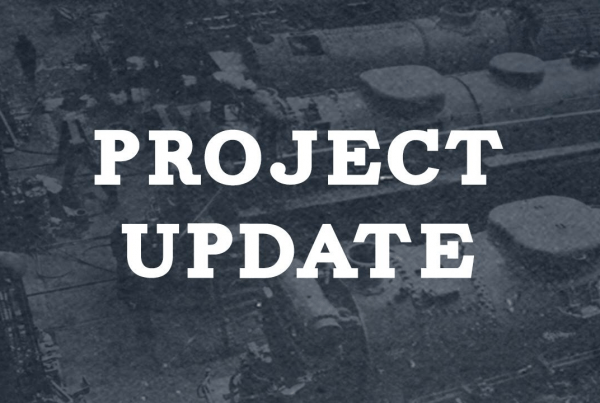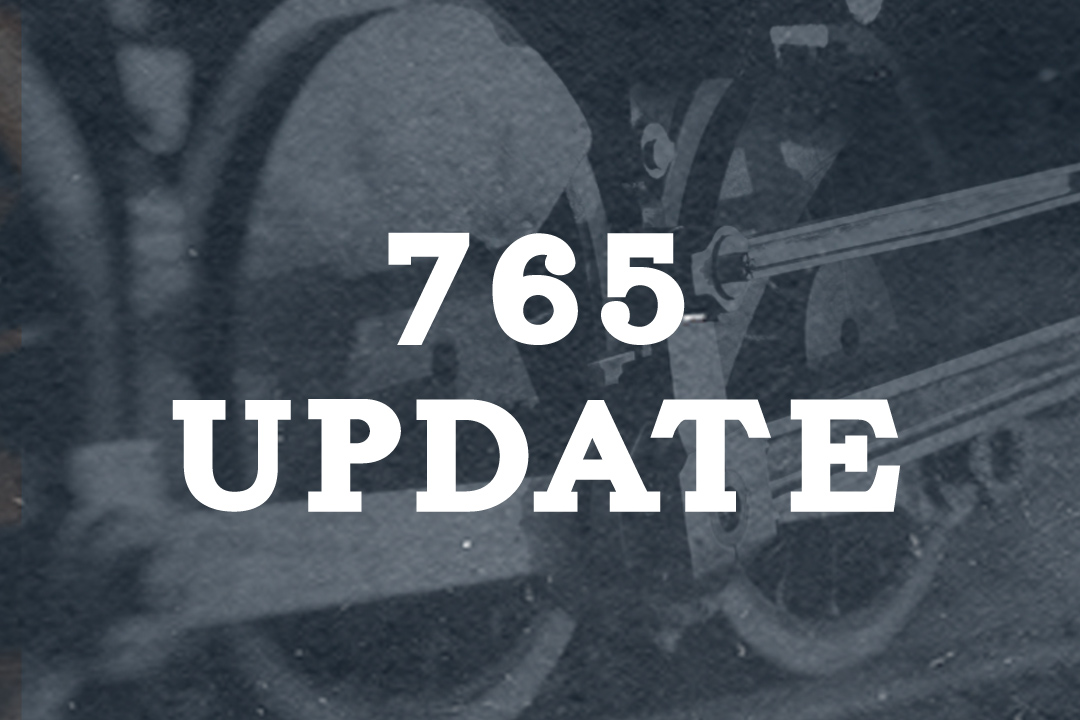Submitted by Steve Winicker.
LAST WEEKENDS SHOP ACTIVITY
Well, I am a day late and many dollars short, but here it goes.
Last week was an eventful one. Al and I made a trip to Lima to trade a stoker valve with the 779. A simple job took quite a while to complete but we successfully removed the needed valve which looks like it will work to replace our worn one. Our old valve will be installed on the 779 so that cosmetically it looks like it always did. I have not had a chance to test the new valve, but it works better than the old one without pressure on it. John looked it over and did some lapping on the valve. Tomorrow I will try hooking it up to some air and see if it appears to regulate the flow as it is supposed to do.
Material for shimming the buffer was obtained and cut to the specified size. This done the buffer was put back together and lubricated as specified in the AMC maintenance book.
The drawbar and pins were dye penetrant tested and the wear measured per the procedure in the above manual. The drawbar and safety bar were hammer tested as well. No issues were found, and they are now ready to go back into the locomotive. Many folks had a hand in getting these projects done.
In other work:
Jerrad worked on the Grove crane. The oil was changed, some gaskets installed, and the filter changed. Initial results were disappointing as it went back to running a short while then dying. Investigation revealed that the fuel return line was plugged and once we had fixed the gaskets the fuel had no place to go and killed the engine. This line was opened, and the crane now runs wonderfully. Before fixing the gaskets, the excess fuel was escaping into the oil and diluting it. We will be watching this, but all signs are that the problem should be fixed.
WD worked on the 1231 and has it working well based on a bit of switching we did to get the truck crane in the building. Once there Jerrad worked on giving it a coat of paint which has improved its appearance considerably. Much more work is needed to put it back in running condition but most of the supplies are on hand and work is expected to continue to an early completion.
The box car got a few more grab irons thanks to Mr. Wolfgang and John Jaress. Tom worked on the brake system and discovered some work that was needed. Once the holes that were discovered are repaired the brakes should work.
The 358 received some work as well, I am not privy to all that was done. A work blitz is scheduled for next weekend.
Brody did some work on the open-air car along with a few others, not sure what was accomplished there.
UPCOMING ACTIVITIES
To keep up with the upcoming schedule of events we need to get the drawbars back in and the engine and tender reconnected. Work should proceed this weekend and with luck the engine will be back together.
SAFETY SENSE
Whether there is no injury, a small bruise or scratch, or worse, the consequences of unsafe acts and conditions are left to chance. A ratio showing a relationship between the number of near-miss incidents and injury incidents reported by researchers shows that for every 15 near-miss incidents, there will be one injury. In other words, there are 15 missed opportunities to prevent an injury.
An unknown number of near misses probably go unreported each month during our maintenance and operational activities. Many may not think of an incident as a near miss, but it is more often human nature that keeps these potential lessons from being reported and improving the safety system. Reasons employees don’t report near misses may be because they do not want to be blamed for problems or mistakes.
It takes time to report a near miss, however, it is truly important you report them. If not, what is lost is a free lesson in injury prevention. The few minutes spent reporting and investigating near-miss incidents can help prevent similar incidents, and even severe injuries. The difference between a near miss and an injury is typically a fraction of an inch or a split second.
It is truly unfortunate to incur a near miss, but it is unacceptable not to learn from those near misses and thus correct policies, procedures, and our human behavior.


